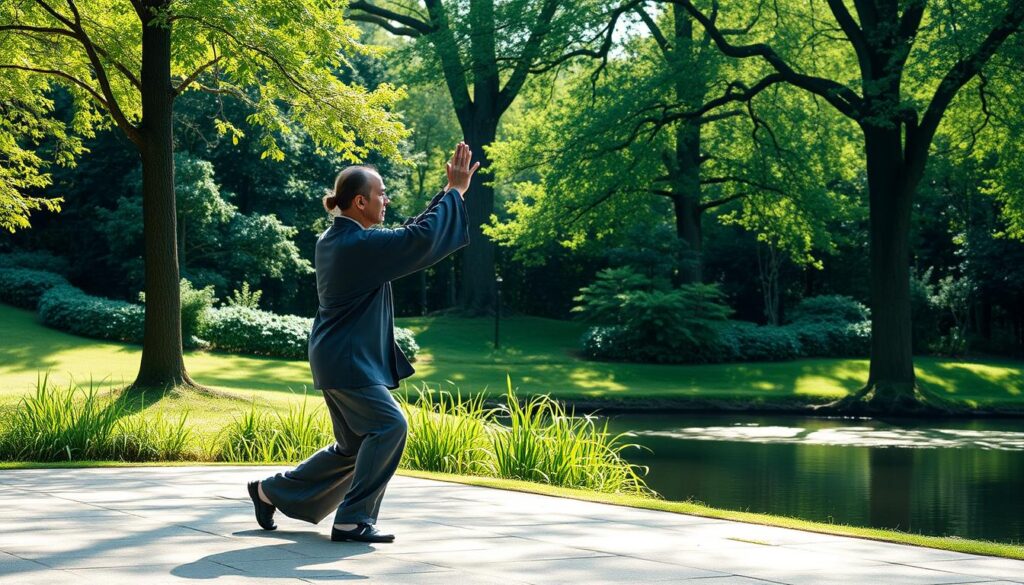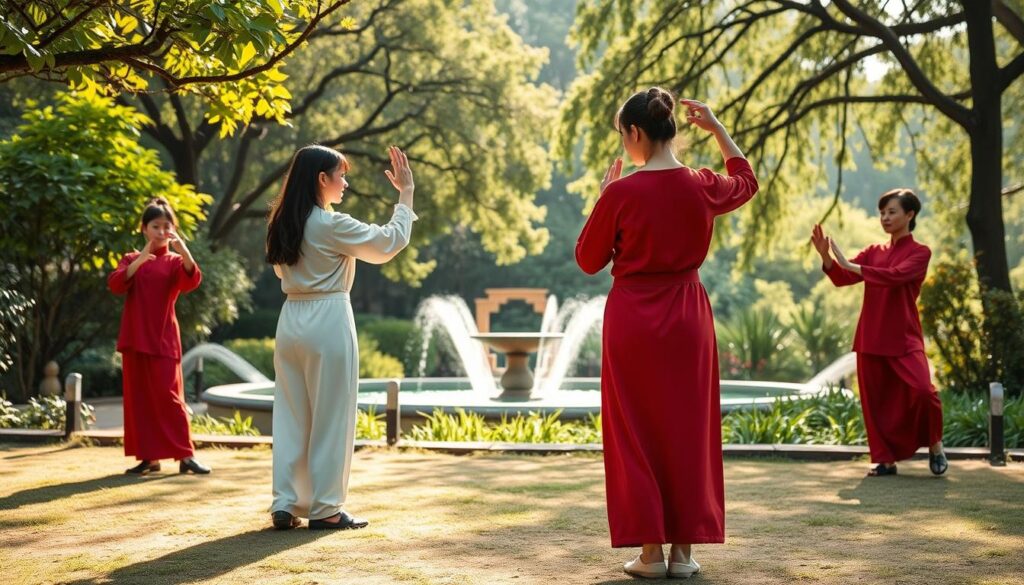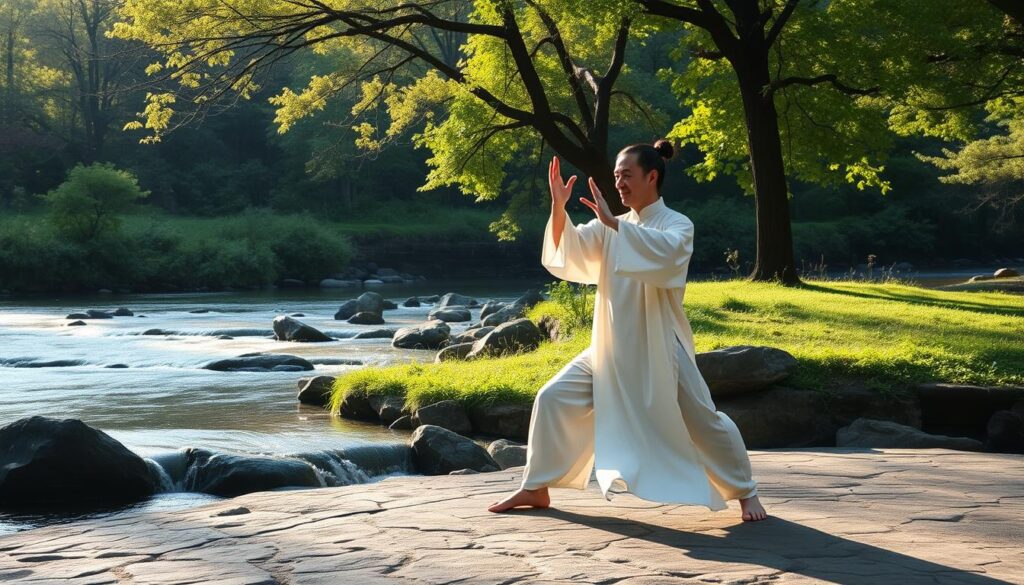There are conflicting ideas about the origin of tai chi. That should be expected, as the modern day Chinese form of exercise and physical fitness originated more than 700 years ago as a martial art. However, it is generally accepted that Shao-Lin martial art practitioner Chang San-feng founded Tai Chi Chuan (what Westerners called tai chi) in the mid-13th century.
The story is a good one.
Born in 1247 (disputed), Chang San-feng was a brilliant child. He had an incredible memory and very high intelligence level, and was a vgilant student and observer. After the death of his parents, he returned home and began studying the Buddhist martial art Shao-Lin. During this time he was living in the Wu Tang mountains, and was drawn outside to his front door one day by a peculiar sound.
He looked from his doorway, and noticed a tree full of cranes chirping and calling out in an aggravated manner. Their focus was on a coiled snake on the ground, which was looking up at them. He watched as one of the birds flew down to attack the snake. The snake gave into the attack, but held its coiled form. This continued over and over until Chang San-feng stepped outside of his home for a closer look, startling the snake and the birds which then disappeared.
Always the observant student, this yielding quality of softness was one of the founding principles he used to create Tai Chi Chuan, the precursor to today’s tai chi. He founded the martial art on the principle of a soft, yielding exterior, founded upon a powerful and strong will on the interior. That is the driving force behind tai chi – to transform inner energy into outward or physical purposes.
There are also those tai chi historians which point out that Chang San-feng was actually Zhang Sanfeng, a Chinese Taoist who reached immortality through the development and perfect practice of tai chi. In many legends, Zhang Sanfeng experienced a powerful dream where a crane-snake battle proved to be his inspiration, with some stories turning the crane into a hawk or magpie.
In any case, the founding belief in tai chi that brute force can be countered with movements that seem at first yielding is the important takeaway. Originally, 13 classic tai chi postures were developed. According to legend sometime between 1368 to 1644, the possibly fictitious and possibly real Wang Tsung-yueh (or Wang Zongyue) choreographed the transitions to and movements between the 13 original postures.
Today tai chi can be practically traced back to 5 major families, each branching off with their own form of the ancient martial art. Their individual forms were kept secret from Westerners. These days however, tai chi practiced as a form of physical exercise is still derived from those first 5 families, resulting in the Chen style, the Sun style, the Wu Hao style of Wu Yu-hsiang, the Yang style and the Wu style of Wu Ch’uan-yu and Wu Chien-ch’uan.



